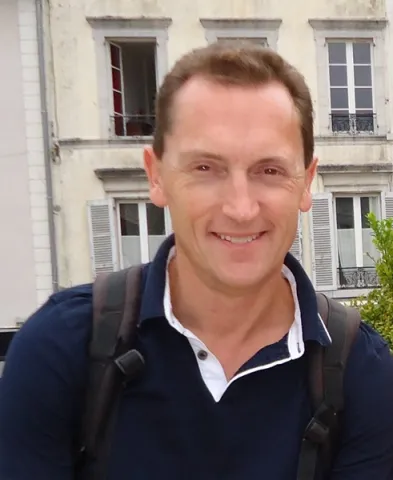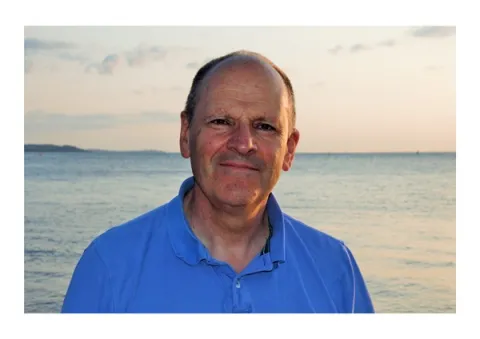Project overview
Floods are the most dangerous and costly of all natural hazards. From 1980 to 2013, floods accounted for more than $1 trillion in losses and resulted in at least 220,000 fatalities globally. More than 50% of these deaths, and a large proportion of the losses, occurred in densely populated low-lying coastal regions, especially those at the coastal-river interface. Continuing to advance our understanding of flooding is therefore of utmost importance.
In coastal regions, floods are often caused by multiple factors. Floods can arise through the joint occurrence of factors such as (1) storm surges plus astronomical tides (storm-tides) and/or (2) local or remotely (swell) generated waves; but also from heavy precipitation, either through (3) increased river discharge (fluvial) and/or (4) direct runoff (pluvial). Most flood risk assessments to date have considered these four main drivers of flooding separately. However, the adverse consequences of a flood in coastal regions can be greatly exacerbated when the oceanographic (storm-tides and waves), fluvial, and/or pluvial sources of flooding occur concurrently or in close succession, a condition known as 'compound flooding', which can result in disproportionately extreme events. Despite their high impact potential, compound events remain poorly understood, in large part because of the lack of information on the inter-dependence of the driving factors, which varies considerably from place to place, and the perceived difficulty of the joint probability analysis methods required to analyse these interdepencies. This is why the World Climate Research Program Grand Challenge on Extremes has identified climatic compound events as an international research priority.
A recent example of a compound event is that associated with Hurricane Harvey in 2017. Record breaking rainfall, river discharge and runoff, combined with a moderate but long-lasting storm surge, resulted in disastrous flooding in Houston. It was the second costliest natural disaster in US history. Moreover, it is recognised that, by not considering compound flooding, the risk to Houston and elsewhere had been, and still is, greatly underestimated.
In CHANCE we will deliver a new integrated approach, incorporating all the spatial and temporal dependencies between the four main source drivers of flooding in coastal regions. This will allow us to make a step change in our understanding and prediction of the source mechanisms driving compound flood events in coastal areas around the North Atlantic basin. We will address the following key questions:
1. Where do (and where don't) compound events occur and which combinations of source-variables are most important in different regions?
2. Which weather types favour the occurrence of compound events and will the frequency of compound events increase/decrease in the future as weather patterns change?
3. What is the likelihood and spatial extent of compound events in different regions?
4. How do compounding effects from multiple flood sources exacerbate impacts to coastal communities?
We will do this through a series of methodological innovations (e.g., novel dependence analyses and state-of-the art weather typing approaches, along with inventive multivariate extreme value analysis techniques and advanced ensemble hydrodynamic modelling) that not only have relevance to the serious issue of compound flooding, but which will also be transferable to other cascading hazards in the earth and environmental sciences, such as: heat waves, drought and bush fires; extreme rainfall, landslides and cliff falls; earthquake and tsunami; and river discharge and turbidity currents. Our new methods will enable us to fully assess and predict all the source variables associated with compound flood events and their spatial extents in coastal regions (past, present and future) and will result in a major advance in the way compound flooding is understood, quantified and managed.
In coastal regions, floods are often caused by multiple factors. Floods can arise through the joint occurrence of factors such as (1) storm surges plus astronomical tides (storm-tides) and/or (2) local or remotely (swell) generated waves; but also from heavy precipitation, either through (3) increased river discharge (fluvial) and/or (4) direct runoff (pluvial). Most flood risk assessments to date have considered these four main drivers of flooding separately. However, the adverse consequences of a flood in coastal regions can be greatly exacerbated when the oceanographic (storm-tides and waves), fluvial, and/or pluvial sources of flooding occur concurrently or in close succession, a condition known as 'compound flooding', which can result in disproportionately extreme events. Despite their high impact potential, compound events remain poorly understood, in large part because of the lack of information on the inter-dependence of the driving factors, which varies considerably from place to place, and the perceived difficulty of the joint probability analysis methods required to analyse these interdepencies. This is why the World Climate Research Program Grand Challenge on Extremes has identified climatic compound events as an international research priority.
A recent example of a compound event is that associated with Hurricane Harvey in 2017. Record breaking rainfall, river discharge and runoff, combined with a moderate but long-lasting storm surge, resulted in disastrous flooding in Houston. It was the second costliest natural disaster in US history. Moreover, it is recognised that, by not considering compound flooding, the risk to Houston and elsewhere had been, and still is, greatly underestimated.
In CHANCE we will deliver a new integrated approach, incorporating all the spatial and temporal dependencies between the four main source drivers of flooding in coastal regions. This will allow us to make a step change in our understanding and prediction of the source mechanisms driving compound flood events in coastal areas around the North Atlantic basin. We will address the following key questions:
1. Where do (and where don't) compound events occur and which combinations of source-variables are most important in different regions?
2. Which weather types favour the occurrence of compound events and will the frequency of compound events increase/decrease in the future as weather patterns change?
3. What is the likelihood and spatial extent of compound events in different regions?
4. How do compounding effects from multiple flood sources exacerbate impacts to coastal communities?
We will do this through a series of methodological innovations (e.g., novel dependence analyses and state-of-the art weather typing approaches, along with inventive multivariate extreme value analysis techniques and advanced ensemble hydrodynamic modelling) that not only have relevance to the serious issue of compound flooding, but which will also be transferable to other cascading hazards in the earth and environmental sciences, such as: heat waves, drought and bush fires; extreme rainfall, landslides and cliff falls; earthquake and tsunami; and river discharge and turbidity currents. Our new methods will enable us to fully assess and predict all the source variables associated with compound flood events and their spatial extents in coastal regions (past, present and future) and will result in a major advance in the way compound flooding is understood, quantified and managed.
Staff
Lead researchers
Other researchers
Collaborating research institutes, centres and groups
Research outputs
Paula Camus Brana, Ivan Haigh, Niall Quinn, Thomas Wahl, Thomas Benson, Ben Gouldby, Ahmed A. Nasr, Md Mamunur Rashid, Alejandra R. Enríquez , Stephen E. Darby, Robert Nicholls & Norberto C. Nadal-Caraballo,
2024, Weather and Climate Extremes, 44
Type: article
Luke Joe Jenkins, Ivan Haigh, Paula Camus Brana, Douglas Pender, Jenny Sansom, Rob Lamb & Hachem Kassem,
2022, Natural Hazards
Type: article
Paula Camus Brana, Ivan Haigh, Thomas Wahl, Ahmed A. Nasr, Fernando Mendez, Stephen Darby & Robert Nicholls,
2022, International Journal of Climatology, 42(11), 5694-5713
DOI: 10.1002/joc.7556
Type: article
Paula Camus Brana, Ivan Haigh, Ahmed A. Nasr, Thomas Wahl, Stephen Darby & Robert Nicholls,
2021, Natural Hazards and Earth System Sciences, 21(7), 2021-2040
Type: article
Measuring compound flood potential from river discharge and storm surge extremes at the global scale
Anais Couasnon, Dirk Eilander, Sanne Muis, Ted I.E. Veldkamp, Ivan D. Haigh, Thomas Wahl, Hessel C. Winsemius & Philip J. Ward,
2020, Natural Hazards and Earth System Sciences, 20(2), 489-504
Type: article
Alistair Hendry, Ivan Haigh, Robert Nicholls, Hugo Winter, Robert Neal, Thomas Wahl, Amelie Joly-Laugel & Stephen Darby,
2019, Hydrology and Earth System Sciences, 23, 3117-3139
Type: article

